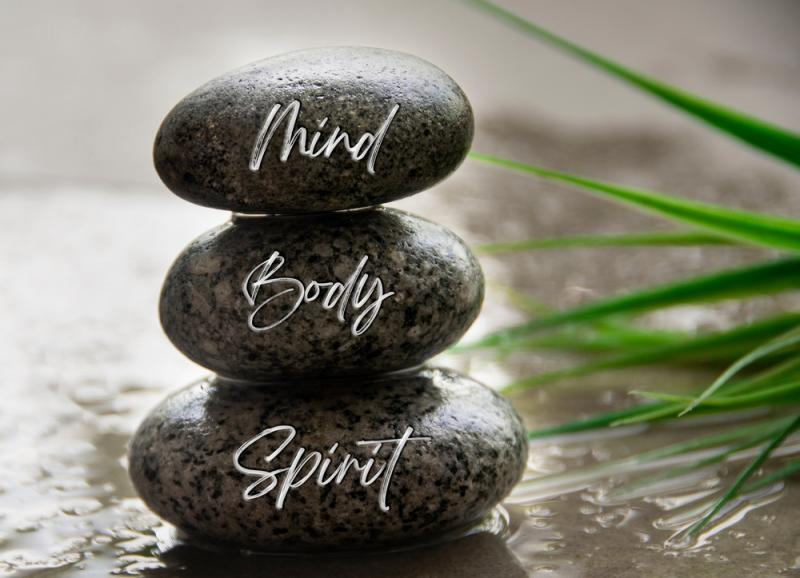You know that moment when someone says something sharp, and you feel heat rise in your chest before you can even think?
Maybe it is a coworker making a passive aggressive comment in a meeting, maybe it is a stranger cutting in line, and maybe it is a partner or family member poking at a sore spot they know you are sensitive about.
Your jaw tightens, your shoulders curl in, and you rehearse comebacks in your head, and the whole scene loops long after the moment has passed.
Those little tests of patience can drain you far more than big life events.
Here is the good news: You can train your mind to respond differently.
Calm is a set of mental habits you can practice.
In this article, I want to walk you through seven of them because they are simple, practical, and they do not require you to become a saint.
They just ask you to be a bit more awake to what is happening inside you when people push your buttons:
1) Notice the first spike instead of the story
The very first thing that happens when someone tests your patience is not the thought.
It is the physical spike.
The heat in your face, the knot in your stomach, and the sudden urge to defend or withdraw.
Most of us skip past that and go straight into the story.
How rude they are, how they always do this, and how no one respects your time, your effort, your boundaries.
That story pours gasoline on the emotional fire.
Staying calm begins with catching the spike before the story takes over.
Next time someone irritates you, see if you can silently label what is happening.
You are just noticing; that small habit shifts you from being inside the emotion to observing it.
When you are the observer, you have more choices.
You can still decide to speak up, set a boundary, or walk away; you are simply less likely to explode or say the thing you will regret later.
How often do you jump straight into the story instead of slowing down to feel the first spike?
2) Take three conscious breaths before you respond
“Take a deep breath” sounds like advice printed on a mug but, when used correctly, conscious breathing is one of the most effective tools you have.
When someone tests your patience, your nervous system surges into a reactive state.
Your body prepares to fight, flee, or freeze.
Three slow, intentional breaths send a signal back to the body that you are safe enough to pause.
Here is how I use it: In a difficult conversation, I sometimes place my tongue lightly on the roof of my mouth and feel the air move in and out of my nose.
Three steady inhales, three slow exhales, and nobody even notices.
I let the other person finish their sentence during those breaths.
Instead of interrupting, I breathe, then answer.
The situation does not magically become pleasant, but my response becomes deliberate instead of purely emotional.
You can try this in traffic, in meetings, during an argument at home.
The habit is simple: Before you answer, breathe, and before you react, breathe.
You might be surprised how often that tiny gap saves you from escalating something that did not need to become a bigger storm.
3) Question your assumptions instead of feeding them
When people annoy us, we usually assume we know why.
Sometimes those interpretations are spot on; sometimes they are completely wrong, and sometimes the other person is not thinking about you at all, they are just acting out their own stress and habits.
A powerful mental habit is learning to gently question your automatic assumptions.
Instead of clinging to the first meaning your mind creates, you widen the frame.
You can even ask yourself a few quick questions in your head, like:
- What else could be going on for them right now?
- Have I ever done something similar when I was stressed or distracted?
- Am I reacting to this moment or to a pattern from my past?
This is about loosening the grip of your interpretation so you are not consumed by it.
In my own life, this shift helped a lot in my marriage.
If my partner sounded short, I used to assume I had done something wrong.
Now I check in with myself and with him: “Are you tired, or is something on your mind?”
Most of the time the answer is yes, and the tension melts before it turns into a full story that neither of us needs.
Questioning your assumptions does not remove all conflict, but it reduces unnecessary suffering.
4) Let your values, not your mood, choose your response
When someone tests your patience, your mood wants to run the show.
Your values should be the ones in charge.
Think for a moment about how you want to show up as a person: Respectful, honest, calm, clear, firm, and kind.
Whatever words you choose, those are your inner guidelines.
The habit here is pausing long enough to ask yourself, “What would my values do in this moment?”
For example, one of my core values is treating people with basic respect, even when I set boundaries.
If someone speaks to me in a harsh tone, I might feel defensive, but I aim to answer in a way that aligns with that value: “I hear you are upset. I am willing to talk about this, but not while I am being spoken to like that. Can we take a moment and come back to it?”
The feeling might be angry, the value is self-respect and respect for the other person, and the more you practice responding from your values, the more grounded you feel, regardless of how someone else behaves.
You stop playing emotional ping pong and start living in a way you can actually be proud of.
5) Use micro-detachment to create emotional space
Detachment means not clinging.
When someone tests your patience, your mind can latch on so tightly that the interaction follows you around for hours.
Micro-detachment is the habit of creating just a bit of emotional space between you and the situation.
One way to practice this is to visualize the interaction as if you are watching it on a screen.
You are in the scene, but you are also viewing it from a slight distance, or you can mentally step back and describe the situation in simple, neutral language.
These techniques are used in different forms in meditation traditions from several cultures.
The goal is similar: You are training yourself to see that you are not your passing emotions—you have them, you feel them, and you ride them but you also have a deeper, quieter part of you that is watching.
That watcher can help you choose peace without pretending you do not care.
What would change if you learned to carry difficult moments more lightly, like a small stone in your pocket instead of a boulder on your back?
6) Speak from grounded honesty instead of silent resentment
Staying calm does not mean staying silent.
Swallowing everything you feel usually turns into resentment, which eventually erupts or seeps out in indirect ways.
Calm is not the same as avoidance.
A healthy mental habit is learning to express yourself clearly and respectfully, even while you are annoyed.
This is where mindfulness and communication meet.
When tension rises, you can check in with your body, breathe, and then use simple “I” statements.
You are naming your experience and stating a request.
This keeps you calm because you do not have to keep replaying the event in your mind.
You gave your feelings a clear path out instead of locking them inside.
I had to learn this the hard way.
For years I thought being “chill” meant I should never speak up.
Inside, I was anything but calm.
Once I started practicing honest, direct communication, my body relaxed and my relationships grew more real (and less tense).
Calm on the outside finally matched calm on the inside.
7) Practice tiny daily resets, not just big breakthroughs
You build patience in small moments, over and over.
When you wait in line and choose not to complain, when you let someone merge into your lane without drama, and when you feel your irritation rising and decide to soften your shoulders instead of tightening them.
These tiny daily resets are like mental yoga.
Just as a physical yoga practice lengthens your muscles over time, these little choices stretch your capacity to stay steady when life pulls on you.
In my own routine, I weave in brief moments of stillness.
A few minutes of morning meditation, a slow walk without my phone, and a gentle stretch at the end of the day.
Those pauses are maintenance and keep my nervous system from constantly sitting on the edge.
When someone does test my patience, I am not starting the day already at my limit.
You do not need an hour-long practice to benefit from this.
Even a one minute reset between tasks helps.
Final thoughts
People will keep testing your patience.
That part will not change, but what can change is how you meet those moments.
These are practices that help you live in a way that feels steadier and truer to who you want to be.
As you move through your day, maybe choose just one of these habits to focus on.
Watch how it shifts your reactions, even a little.
Then ask yourself, gently and honestly: How do I want to show up next time someone tests my patience?


